
Naturism is a lifestyle of practicing non-sexual social nudity in private and in public; the word also refers to the cultural movement which advocates and defends that lifestyle. Both may alternatively be called nudism. Though the two terms are broadly interchangeable, nudism emphasizes the practice of nudity, whilst naturism highlights an attitude favoring harmony with nature and respect for the environment, into which that practice is integrated. That said, naturists come from a range of philosophical and cultural backgrounds; there is no single naturist ideology.
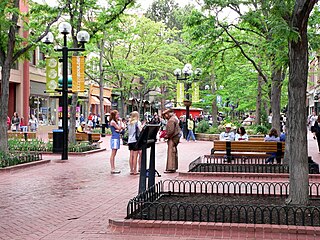
Boulder is a home rule city and the county seat of Boulder County, Colorado, United States. It is the largest city in Boulder County, with a population of 108,250 at the 2020 United States census, making it the 12th-most populous city in Colorado. Boulder is the principal city of the Boulder, CO Metropolitan Statistical Area and part of the Front Range Urban Corridor.

Indecent exposure is the deliberate public exposure by a person of a portion of their body in a manner contrary to local standards of appropriate behavior. Laws and social attitudes regarding indecent exposure vary significantly in different countries. It ranges from outright prohibition of the exposure of any body parts other than the hands or face to prohibition of exposure of certain body parts, such as the genital area, buttocks or breasts.

Streaking is the act of running naked through a public area for publicity, as a prank, a dare, or a form of protest. Streaking is often associated with sporting events, but can occur in more secluded areas. Streakers are often pursued by sporting officials or the police.

Toplessness refers to the state in which a woman's breasts, including her areolas and nipples, are exposed, especially in a public place or in a visual medium. The male equivalent is known as barechestedness.

The World Naked Bike Ride (WNBR) is an international clothing-optional bike ride in which participants plan, meet and ride together en masse on human-powered transport, to "deliver a vision of a cleaner, safer, body-positive world." The first ride happened in Zaragoza (Spain) in 2001.
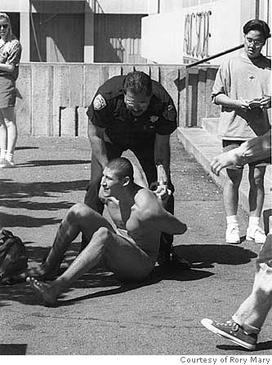
Luis Andrew Martinez was an activist who was known at the University of California, Berkeley as the Naked Guy.

The Solstice Cyclists is an artistic, non-political, clothing-optional bike ride celebrating the summer solstice. It is the unofficial start of the Summer Solstice Parade & Pageant, an event produced by the Fremont Arts Council in the Fremont district of Seattle.
Clothing laws vary considerably around the world. In most countries, there are no laws which prescribe what clothing is required to be worn. However, the community standards of clothing are set indirectly by way of prosecution of those who wear something that is not socially approved. Those people who wear insufficient clothing can be prosecuted in many countries under various offences termed indecent exposure, public indecency, nudity or other descriptions. Generally, these offences do not themselves define what is and what is not acceptable clothing to constitute the offence, and leave it to a judge to determine in each case.

Nude recreation consists of recreational activities which some people engage in while nude. Historically, the ancient Olympic Games were nude events. There remain some societies in Africa, Oceania, and South America that continue to engage in everyday public activities—including sports—without clothes, while in most of the world nude activities take place in either private spaces or separate clothing optional areas in public spaces. Occasional events, such as nude bike rides, may occur in public areas where nudity is not otherwise allowed.

In the United States, indecent exposure refers to conduct undertaken in a non-private or publicly viewable location, which is deemed indecent in nature, such as nudity, masturbation or sexual intercourse. Such activity is often illegal. The legal definition in a given location may not specify all activities that would be covered.
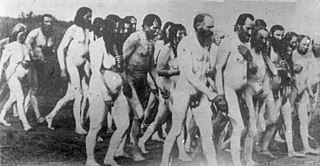
Nudity is sometimes used as a tactic during a protest to attract media and public attention to a cause, and sometimes promotion of public nudity is itself the objective of a nude protest. The practice was first documented in the 1650s with Quakers "naked as a sign" practice. Later the tactic was used by svobodniki in Canada in 1903, and photographs of their nude protests have been published. The tactic has been used by other groups later in the century, especially after the 1960s. Like public nudity in general, the cultural and legal acceptance of nudity as a tactic in protest also varies around the world. Some opponents of any public nudity claim that it is indecent, especially when it can be viewed by children; while others argue that it is a legitimate form of expression covered by the right to free speech.

Nudity is the state of being in which a human is without clothing. While estimates vary, for the first 90,000 years of pre-history, anatomically modern humans were naked, having lost their body hair and living in hospitable climates. As humans became behaviorally modern, body adornments such as jewelry, tattoos, body paint and scarification became part of non-verbal communications, indicating a person's social and individual characteristics. Indigenous peoples in warm climates used clothing for decorative, symbolic or ceremonial purposes but were often nude, having neither the need to protect the body from the elements nor any conception of nakedness being shameful. In many societies, both ancient and contemporary, children might be naked until the beginning of puberty. Women may not cover their breasts, being associated with nursing babies more than with sexuality.
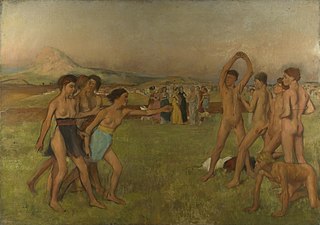
This timeline of social nudity shows the varying degrees of acceptance given to the naked human body by diverse cultures throughout history. The events listed here demonstrate how various societies have shifted between strict and lax clothing standards, how nudity has played a part in social movements and protest, and how the nude human body is accepted in the public sphere.

An Undie Run is an event where a large number of people disrobe until they are only wearing underwear, and then run. The site of Undie Runs are typically college campuses, but they may occur on other sites such as streets. Undie Runs may be purely for entertainment, a form of protest, or as with the ASU Undie Run, fund-raising for charitable purposes. It is reported that the Guinness Book of World Records considers the Undie Run that took place on September 24, 2011, in Salt Lake City, Utah, United States to have had a record number of participants. There were 2,270 participants in that Undie Run, which was held to protest Utah's conservative laws. COED Magazine, a magazine in the United States marketed to college students, has reported that Undie Runs are the "number one university sanctioned event".
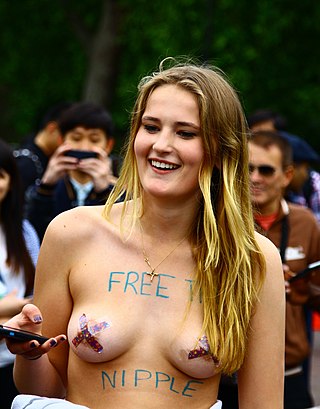
Free the Nipple is a topfreedom campaign created in 2012 during pre-production of a 2014 film of the same name. The campaign highlights the general convention of allowing men to appear topless in public while considering it sexual or indecent for women to do the same and asserts that this difference is an unjust treatment of women. The campaign argues that it should be legally and culturally acceptable for women to bare their nipples in public.
Naturism in the United States is the practice of social nudity as a lifestyle that seeks an alternative to the majority view of American society that considers nakedness and sexuality to be taboo based upon the legacy of Puritan and Victorian attitudes. Enthusiasm for naturism began in the late 1920s with the establishment of members-only communities where naturists could gather to socialize and enjoy recreation without clothing in an environment that was no more sexual than that experienced while clothed. In later decades some groups began advocating for more general acceptance, and the opening up of public land to clothing-optional recreation.

In the United States, individual states have primary jurisdiction in matters of public morality. The topfreedom movement has claimed success in a few instances in persuading some state and federal courts to overturn some state laws on the basis of sex discrimination or equal protection, arguing that a woman should be free to expose her chest in any context in which a man can expose his. Other successful cases have been on the basis of freedom of expression in protest, or simply that exposure of breasts is not indecent.
The Naked Mile, or Nude Mile, was a streaker run across the University of Michigan campus which was started in 1986 by student athletes to celebrate the last day of winter term classes in April. It became an annual event and continued until the early 2000s. The run took place after dark, starting at around midnight. The route ran between two campus landmarks, starting at The Rock and finishing at The Cube near the Michigan Union.















